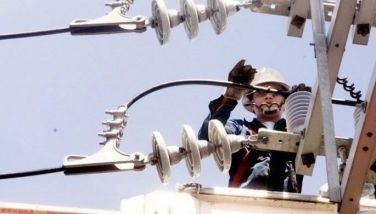Boeing’s PR catastrophe

Over a family lunch last Sunday, a niece announced that she and her family are going to Tokyo for a vacation. They made sure their flights will not be in a Boeing aircraft.
I commented that not all Boeing commercial planes are problematic… only the 737 Max 8 model. Indeed, my wife took a Malaysian Airlines flight last month to Kuala Lumpur on an older 737.
Given the two accidents, it is natural for people to make sure they are not riding any 737s… even the older models. This is a long-term marketing and image problem for Boeing.
My niece and her family are flying to Haneda on Philippine Airlines. I remarked that’s a good choice because among others, PAL doesn’t have any 737s. The Airbus 320 is the favorite single-aisle aircraft of local airlines.
Even if they assigned a Boeing aircraft on the Haneda flight, it will likely be one of the 777s they also use on the trans-Pacific flights. I have taken those 777s a number of times. It worked fine, even through stormy weather over the Canadian Artic in PAL’s inaugural flight to Toronto.
How Boeing resolves this monumental PR crisis should make a fantastic case study that communications practitioners will cite for many years. So far, Boeing is continuing to mess things up… digging an even bigger hole that could threaten its corporate existence.
This is so different from the way Johnson and Johnson handled their Tylenol crisis decades ago. J and J immediately did the right things after it was revealed that some of the Tylenol bottles on store shelves may have been tampered and poisoned.
Of course, the cost of discarding all the Tylenol products on store shelves nationwide is nothing compared to the financial cost of discarding all those 737 Max8 planes already bought by the airlines. But it is the principle that counts… stop trying to minimize its responsibility for the problem or pass the blame. Instead, start doing something to win back public confidence.
It is obvious Boeing’s lawyers are trying to mitigate the legal impact of the problem in their public posture. But in so doing, Boeing looks like it is evading responsibility and the optics is bad today and will haunt Boeing for a long time.
As it is turning out now, it appears Boeing has much to explain and much blame to take. In their rush to put out a model to catch up with Airbus in the single-aisle segment of the market, they apparently cut a lot of significant corners.
Boeing designed the 737 Max 8 to be similar enough to existing 737s that it could keep the same “type rating”—meaning, that pilots who already flew 737s wouldn’t have to be retrained on a new plane and airlines would save a lot of money.
But, as qz.com pointed out, the Max 8 is different from previous 737s in one major way: It has larger engines placed farther forward on its wings. The new design increased the risk that the plane could stall if pilots angled the nose too high.
To counteract this risk, Boeing introduced a software, the Maneuvering Characteristics Augmentation System (MCAS), which automatically nudges the nose down if onboard sensors detect that the plane risks stalling.
After the two 737 Max 8 crashes, it was found out that the sensors were giving erroneous readings that made the software drive the plane in a downward direction.
Boeing designed the MCAS to only use readings from one of the sensors. Black box data from the Lion Air crash shows that readings from the two angle-of-attack sensors differed by 20 degrees even while the plane was taxiing on the runway, indicating that the instruments were faulty from the start.
A warning light Boeing designed to alert pilots when the sensors are malfunctioning was not installed as a standard feature on the 737 Max 8. It was offered only as an option and the airlines thought it was not essential.
Boeing’s proposed solution involves a plan for “a flight control software enhancement for the 737 Max” that has been in the works since the Lion Air crash that killed 189 people.
They should have grounded the 737 Max 8 planes until the software fix was ready. After all, Boeing already knew it was a software problem at that point. They could have saved the 157 who perished in Ethiopia.
Boeing also plans to train pilots on the system and mention the MCAS in flight manuals, something it should have done to begin with. Some pilots claim that the additional training they got was equivalent to an hour on an i-Pad. Most pilots were not told about MCAS.
The 737 Max8 case also revealed serious regulatory capture in the US government. The US FAA delegated the technical evaluation aspects of the new aircraft to Boeing itself. This is scandalous.
Will the 737 Max 8 fly again? Not too many people will choose to board one even with the new software and better pilot training.
It may be possible to re-build confidence if senior Boeing officials from CEO, board directors, Boeing staff in charge of software development, marketing, lawyers and even FAA regulatory officials will be required to fly on all 737 Max 8 flights for many months.
For sure, some public confidence has been lost on the growing over dependence on computer programs in today’s flights. I know… advanced flight software enhances safety and reduces chances of human error.
But what if, a computer error like that of the Boeing MCAS software happens again?
Even on land, a computer bug is suspected to be behind cases of unexpected acceleration of cars that have resulted in deaths and injuries. Software deficiency was blamed when a self-driving car being tested by Uber in Arizona killed a pedestrian.
How do we more confidently detect and debug such programs to prevent death and injuries?
Boo Chanco’s e-mail address is [email protected]
Follow him on Twitter @boochanco
- Latest
- Trending































